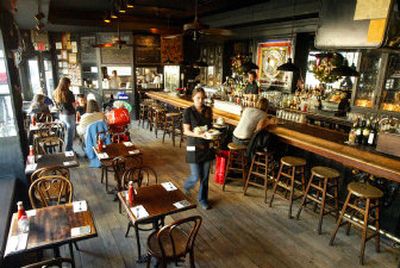Strike’s cost up for debate

NEW YORK – Shops without shoppers. Work without workers. For three days, a transit strike in the city that never sleeps forced much of its hard-charging economy to take a fitful nap.
But how much damage did the strike actually inflict on the economy? Probably not nearly as much as city officials claimed, say analysts, noting that even the best guess is just that – a guess.
“You’re definitely talking art, not science,” said Rae Rosen, a senior economist with the Federal Reserve Bank of New York, on the difficulty of estimating the strike’s toll. “There’s no mathematical model that’s going to give you a reliable number today.”
New York Mayor Michael Bloomberg cited such models this week in claiming the strike would cost the city $400 million a day. But the mayor’s figure, widely cited in press reports, was more a ballpark number than a precisely derived statistic.
City officials actually forecast that $400 million loss only for the first day of the strike, with $300 million lost for each following weekday and $100 million a day if the walkout continued into the weekend. A city economic development group said the damage could reach $440 million to $660 million a day.
The figures struck several economists as being too high.
Goldman Sachs economists Ed McKelvey and Sarah Aronchick said in a report this week that even $200 million a day was too high, because it failed to account for “offsets.” Some workers unable to get to work likely worked from home via computer. Many people who would have shopped in the city may have turned instead to suburban locations. The strike also generated new kinds of economic activity, as employers rented buses to shuttle workers, and snapped up hotel rooms to house them, they said.
Some costs of the strike are more easily quantified.
The city racked up about $10 million a day in overtime pay for police officers during the strike, and lost an estimated $12 million a day in sales taxes, Bloomberg said Thursday. The city will not have actual tax figures in hand for four to six weeks, officials said.
For big retailers, the strike could translate into a quarter of a percentage point decline in nationwide sales at their established stores, said Michael P. Niemira, chief economist at the International Council of Shopping Centers. About 20 percent of holiday sales take place in the last week before Christmas.
But some will suffer more than others. Among the most affected are retailers like Tiffany & Co., Saks Inc., and Macy’s and Bloomingdale’s parent, Federated Department Stores Inc., which have big, flagship stores in Manhattan, according to Adrianne Shapira, an analyst at Goldman Sachs & Co.
But Broadway theaters – which sell many of their seats far in advance – continued drawing crowds. “It’s pretty much, ‘the show must go on,’ ” said Alan Cohen, a spokesman for The League of American Theatres and Producers Inc.
Except for a 6 percent to 9 percent no-show rate at Wednesday matinees, Broadway theater audience attendance has been normal, he said, based on reports received from producers.
Economist David Wyss of Standard & Poor’s estimated that about 25 percent of the city’s productive time had been lost during the strike, as people wasted extra hours trying to get where they needed to go. That is substantial for the city, he said, but of almost no consequence to the national economy.
“This is not a national event or even a regional event, because if people aren’t spending money, they’re going to spend it somewhere else,” he said.
That doesn’t mean the strike didn’t have a very real and painful cost for many.
“The people who have to get to work at a certain time, who don’t use computers, who are nursing home workers or hotel workers or day care providers, those are the ones that are going to be hurt the most,” said Beth Shulman, author of “The Betrayal of Work,” about the lives of low-wage workers.
Consider the toll on Jerry Castro, who works in an open-air parking garage in midtown Manhattan. He lost $50 a day in tips when most of the garage was closed to provide clear passage to emergency vehicles. Instead of 150 cars a day, this week there were just 30.
“The strikers are crazy, creating problems in this cold weather,” said Castro, who also spent $20 a day taking cabs to and from his Queens home. “I have nothing.”
Marcia Van Wagner, deputy comptroller for budget who had a hand in coming up with the city’s estimated loss from the strike, said on Wednesday that she was still comfortable with the predictions.
To start, the city took the measure of the city’s annual economic activity – about $425 billion – and adjusted for the time of year. They figured losses by estimating how the strike would disrupt productivity and retail, plus overtime for city workers.
“There’s not a magic formula or model or something that produces a number like this,” she said. “We’ll never really know.”